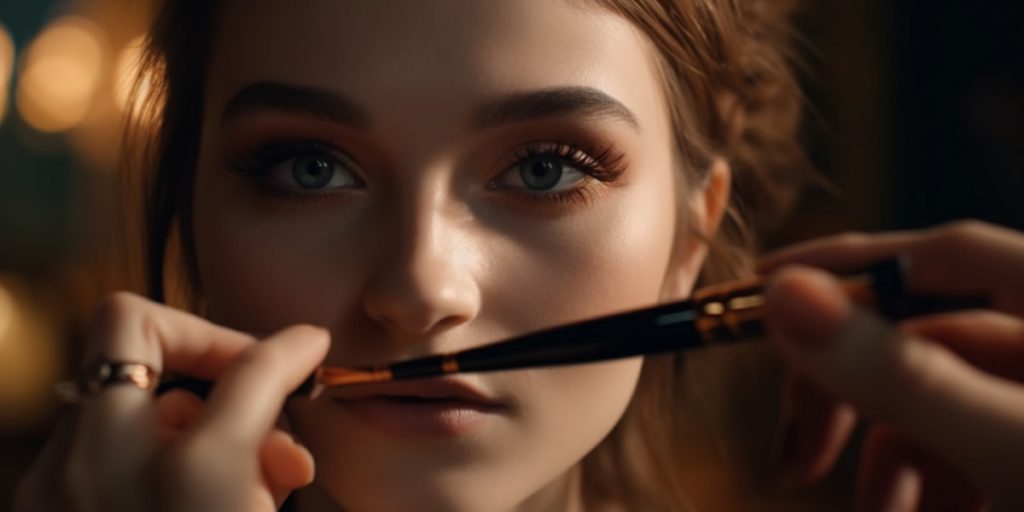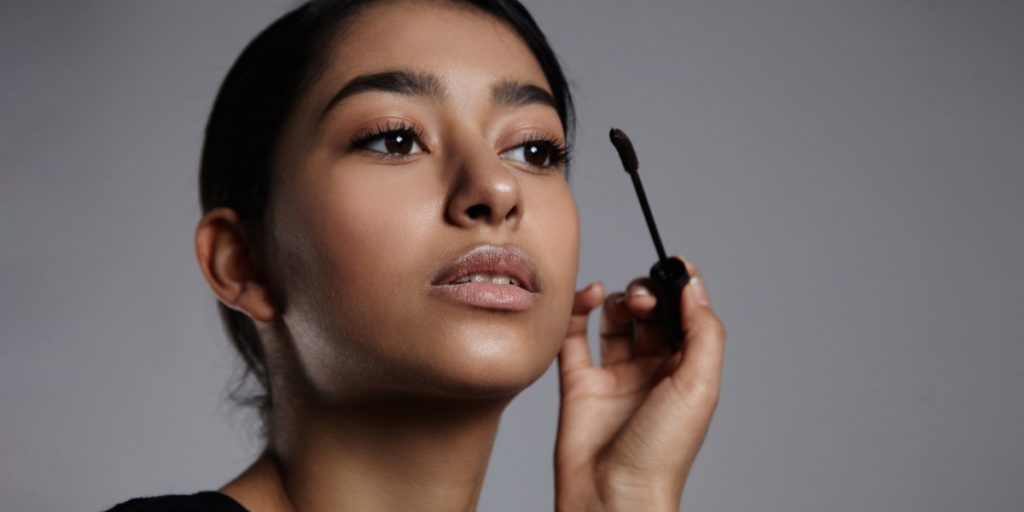Published on February 22nd, 2024
Last updated on February 22nd, 2024
Unveiling the World of DIY Mascara

Do-it-yourself cosmetics have emerged as a captivating and empowering niche in the beauty area. Commercial products and ever-evolving trends generally dominate it. It offers beauty enthusiasts a chance to personalize their makeup routines. Among the myriad DIY possibilities, crafting your mascara stands out as a unique and innovative try. It allows individuals to tailor their lash-enhancing experience. This article delves into the fascinating world of DIY natural mascara. It unveils the secrets behind creating your custom lash formula. We explore the selection of key ingredients that promote healthy lashes.
Also, we experimented with pigments to achieve the perfect shade and explored the art and science of mascara making. We navigate the process. So, you’ll discover the freedom to control the ingredients, consistency, and even the brush design. We provide bespoke mascara that aligns with your unique style and preferences. Join us on this exploration of self-expression and creativity in DIY natural mascara. Their beauty becomes a personalized work of art.
The Basics of DIY Mascara Ingredients
Creating your mascara at home involves a delightful blend of creativity and chemistry. Understanding the fundamental ingredients is the first step. It is vital in mastering the art of DIY lash enhancement. Each component, from natural oils to pigments, is crucial in formulating a mascara. It defines your lashes and nourishes them.
- Wax Base: The backbone of any mascara, the wax provides the necessary structure and texture. Beeswax and carnauba wax are popular choices. They offer a smooth consistency and a sturdy hold.
- Oils: Coconut, jojoba, or argan oil contribute to the mascara’s moisturizing properties. They are preventing lashes from becoming dry and brittle.
- Pigments: Experiment with pigments to achieve the desired color. Charcoal, cocoa powder, or activated carbon can achieve classic black shades. Other natural pigments open the door to a wide range of colors.
- Powder Fillers: You can add cornstarch or arrowroot powder to adjust the thickness of the mascara and give it a matte finish.
- Preservatives: Consider incorporating vitamin E oil or grapefruit seed extract. They prolong shelf life.
- Essential Oils: Essential oils such as lavender or chamomile provide a pleasing fragrance and more benefits.
We embark on this journey through the basics of ingredients for mascara. So, the versatility of these elements becomes clear. We invite you to tailor your lash-enhancing potion to perfection.
Homemade Mascara Recipes

Creating your cosmetics at home opens up possibilities. It allows you to experiment with various ingredients and formulations. Here are several recipes that cater to different preferences and needs:
Classic Black Mascara:
- 2 teaspoons of beeswax;
- 1 teaspoon of coconut oil;
- 3 teaspoons of activated charcoal powder;
- 1-2 drops of vitamin E oil for preservation.
Lengthening and Conditioning Mascara:
- 1.5 teaspoons of carnauba wax;
- 1.5 teaspoons of jojoba oil;
- 2 teaspoons of bentonite clay;
- 1 teaspoon of black iron oxide (for color);
- 1-2 drops of lavender essential oil (optional for fragrance).
Waterproof Mascara:
- 1.5 teaspoons of candelilla wax;
- 1.5 teaspoons of argan oil;
- 2 teaspoons of black oxide pigment;
- 1 teaspoon of magnesium stearate (for waterproofing);
- 1-2 drops of tea tree oil for its antimicrobial properties.
Colored Mascara (Blue):
- 2 teaspoons of beeswax;
- 1 teaspoon of sweet almond oil;
- 3 teaspoons of ultramarine blue pigment;
- 1-2 drops of vitamin E oil for preservation.
Volumizing Mascara:
- 1.5 teaspoons of soy wax;
- 1.5 teaspoons of castor oil;
- 2 teaspoons of kaolin clay;
- 1 teaspoon of black iron oxide;
- 1-2 drops of rosemary essential oil (for promoting hair growth).
Experimenting with these DIY mascara recipes allows you to find the perfect blend. It’ll suit your desired color, texture, and lash-enhancing properties. Remember to adjust the quantity of ingredients according to your preferences. Also, maintain cleanliness and hygiene while cooking.
Application Techniques for DIY Mascara
Achieving flawless lashes with homemade mascara involves several moments. Among them are creating the perfect formula and mastering the application techniques. Here are several application techniques to enhance your lash game:
- Curl Your Lashes: Before applying mascara, use an eyelash curler to lift and curl your lashes. It creates a wide-eyed effect and makes your lashes appear longer.
- Use a Lash Comb: After applying each coat of mascara, comb through your lashes with a clean lash comb to separate and remove clumps. It ensures a smooth and defined look.
- Layering Technique: Apply mascara in thin, even layers, allowing each coat to dry before applying the next. It prevents clumping and builds volume gradually.
- Wiggle the Wand: When applying mascara, wiggle the wand at the base of your lashes and then pull it towards the ends. It ensures even coverage of each eyelash.
- Focus on the Outer Lashes: For a cat-eye effect, apply an extra coat of mascara to the outer lashes. It elongates the eyes and adds a subtle flick.
- Bottom Lash Emphasis: Use a smaller mascara wand or a clean, angled brush to apply to your bottom lashes. It enhances your overall eye look without overpowering it.
- DIY Mascara Sealant: To prevent smudging, consider applying a DIY sealant over your mascara. A thin layer of beeswax or clear mascara can help set your mascara in place.
- Customize Your Brush: Your DIY natural mascara may come with a disposable brush. So, experiment with different brush shapes to find one that suits your preferred application style.
- Precision with Q-Tips: Clean up any smudges or mistakes using a Q-tip dipped in makeup remover. It ensures a polished finish without disturbing the rest of your makeup.
- Remove with Care: Use a gentle eye makeup remover to avoid tugging on your lashes when removing your mascara. It helps maintain lash health.
Mastering these application techniques will showcase the benefits of your DIY-colored mascara. Also, they’ll elevate your overall eye makeup game. Experiment, have fun, and discover the perfect application routine for your personalized lash look.
Storing and Preserving DIY Mascara
Preserving the longevity and quality of your mascara is essential for a successful homemade beauty product. Here’s a list of tips for storing and maintaining your DIY mascara:
- Airtight Container: Store your DIY natural mascara in an airtight container to prevent exposure. It can lead to drying out and contamination.
- Excellent and Dark Location: Keep your mascara in a calm, dark place away from direct sunlight. It helps prevent the breakdown of ingredients and maintains the mascara’s effectiveness.
- Avoid Contamination: Avoid touching the mascara wand with your fingers or other surfaces. It minimizes the risk of introducing bacteria into the mascara, ensuring hygiene.
- Use Clean Tools: Always use clean brushes or disposable wands when applying mascara to avoid contamination. Regularly clean and sanitize the tools to maintain a hygienic application.
- Check for Changes: Regularly inspect your DIY mascara for color, smell, or texture changes. If you notice any changes, this may say the product has deteriorated. It would help if you threw it away.
- Preservatives: Your DIY mascara recipe may include vitamin E or grapefruit seed extract. So, ensure you add the recommended amount. These ingredients help extend the mascara’s shelf life.
- Avoid Water Contamination: Water can introduce bacteria into your mascara. Avoid adding water or water-based ingredients to the mascara formula, and ensure your tools are dry when applying.
- Store in the Refrigerator: Store your mascara in the refrigerator for added preservation. The cool temperature slows down the degradation of ingredients. It helps prevent bacterial growth.
- Rotate Your Mascara: If you have several mascaras, consider rotating them to ensure you use them before the end. It prevents wastage and ensures you always have a fresh supply.
- Secure Lid Tight: Keep the lid tightly after each use to prevent air exposure and drying. It helps maintain the mascara’s consistency and prevents it from becoming too thick.
Adhere to these storage and preservation practices. So, you can extend the life of your DIY colored mascara, ensuring that it remains safe, effective, and a reliable addition to your beauty routine.
Risks and Allergies

Creating your mascara can be a fun and rewarding experience. So, it’s essential to be aware of potential risks and allergens associated with homemade beauty products. Here’s a list of considerations to minimize these risks:
- Eye Irritation: Poorly formulated mascaras may contain ingredients that can irritate the eyes. Be cautious and perform a patch test before applying the mascara to your lashes.
- Bacterial Contamination: Homemade mascaras can be susceptible to bacterial contamination. Especially if they have added water or water-based ingredients, bacteria can lead to eye infections.
- Allergic Reactions: Ingredients like essential oils, waxes, or pigments may cause allergic reactions. Patch testing is crucial to identify any potential allergens.
- DIY Hygiene: Ensure a clean and sanitized environment when preparing your DIY natural mascara. Use clean utensils, containers, and tools to minimize the risk of contamination.
- Preservation Techniques: Inadequate use of preservatives or improper preservation techniques. They may lead to spoilage and bacterial growth in the mascara.
- Eyelash Damage: Mascaras that are too thick or contain harsh ingredients can damage your eyelashes. They are causing them to become brittle or thin.
- Expired Ingredients: Check the end dates of the ingredients used in your DIY cosmetic. Expired ingredients may lose their effectiveness and compromise the product’s safety.
- Lack of Testing: Mascaras often need more rigorous testing undergone by commercial products. Monitoring and evaluating the mascara’s performance and safety is essential over time.
- Unintended Reactions: Certain ingredients may react with each other unexpectedly. They alter the formula’s properties and potentially cause adverse effects.
- Inadequate Removal: Using harsh or improper makeup removal techniques is dangerous. It can cause damage to your eyelashes. Ensure you remove the DIY-colored mascara gently to maintain lash health.
- Individual Sensitivity: Everyone’s skin and eyes are different. What works for one person may only work for one person. Pay attention to how your eyes and lashes react to the mascara.
- Consultation with a Professional: You may have pre-existing eye conditions or allergies. Also, you can have concerns about cosmetics’s safety. So, consult a dermatologist or an eye care professional before use.
Being mindful of these risks and taking necessary precautions can help you enjoy the creative process of making DIY mascara. Also, they may minimize potential adverse effects on your eyes and lashes.
Conclusion
The secrets to creating your lash magic lies in the perfect blend of artistry and science. You craft personalized formulas and master application techniques. So, remember to prioritize hygiene, preservatives, and allergen awareness. Embrace the freedom to experiment with colors, textures, and nourishing agents. Through careful exploration and a commitment to safety, your DIY natural mascara becomes a unique expression of self. Unveil the beauty within by blending creativity and caution. Let your lashes tell the tale of your personalized enchantment—one coat at a time. Create your lash magic and let your eyes sparkle with individuality.
FAQ
What are the common mistakes to avoid when making DIY mascara?
There are common mistakes to avoid when making DIY mascara. They include inadequate preservation, introducing water-based ingredients, and neglecting hygiene practices. They help to prevent bacterial contamination.
Can I use ingredients from my kitchen for homemade mascara?
You may use kitchen ingredients like coconut oil and beeswax for homemade mascara. So, ensuring they’re eye-safe and follow a well-balanced recipe is essential.
Are there any natural alternatives to chemical preservatives for DIY mascara?
Yes. Vitamin E or grapefruit seed extract can serve as chemical-free preservatives in DIY mascara. They are promoting a more natural and eco-friendly approach to beauty.

